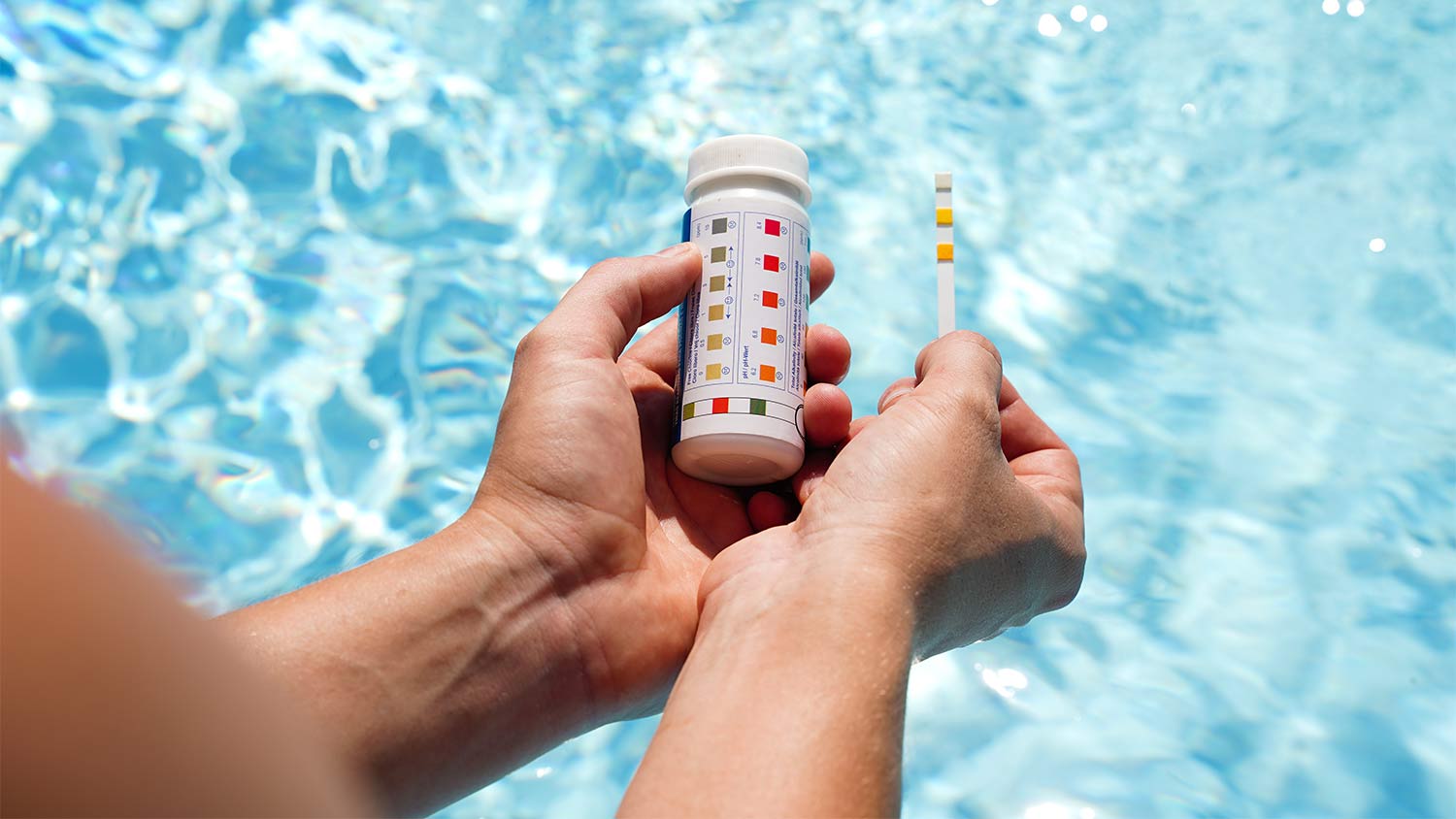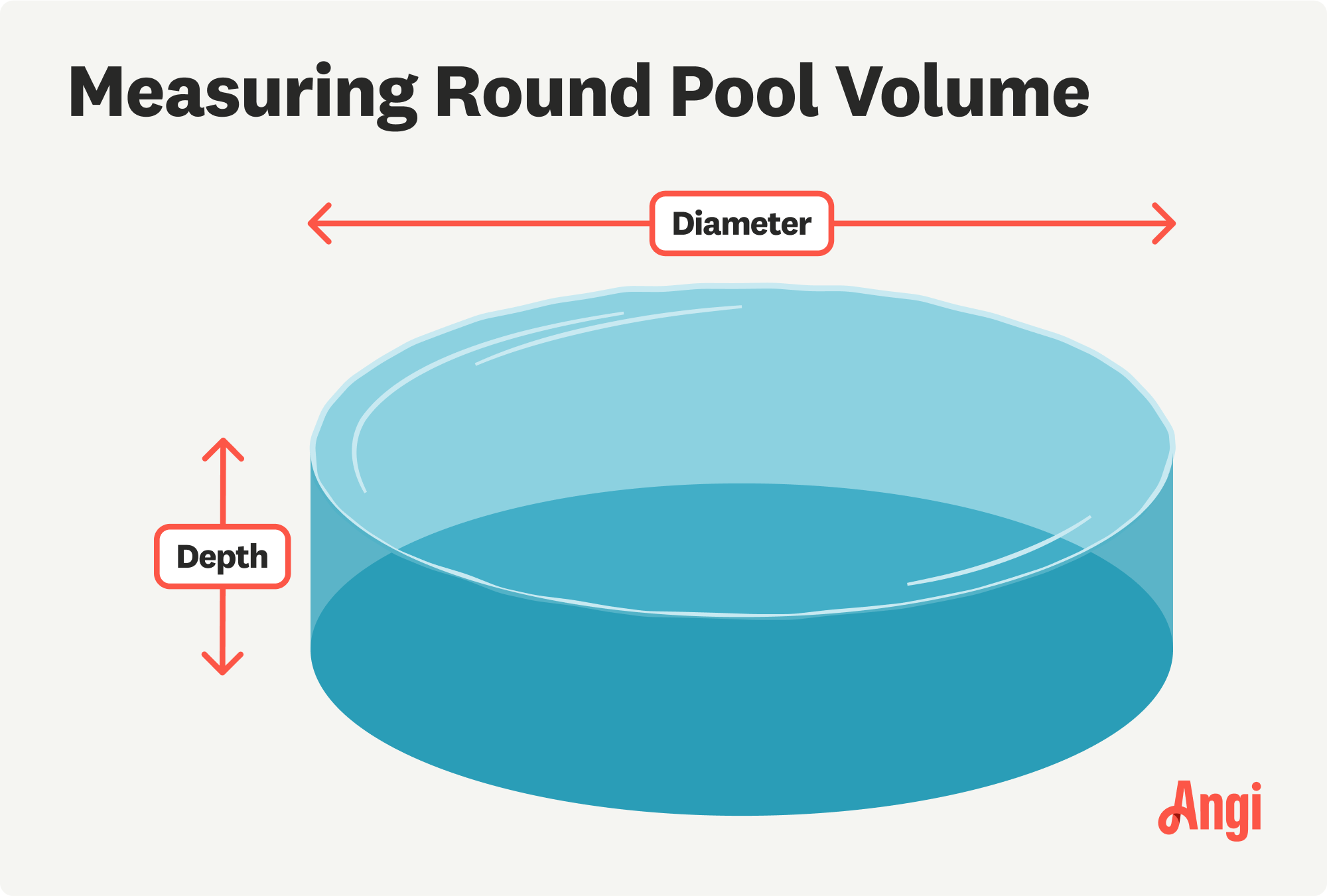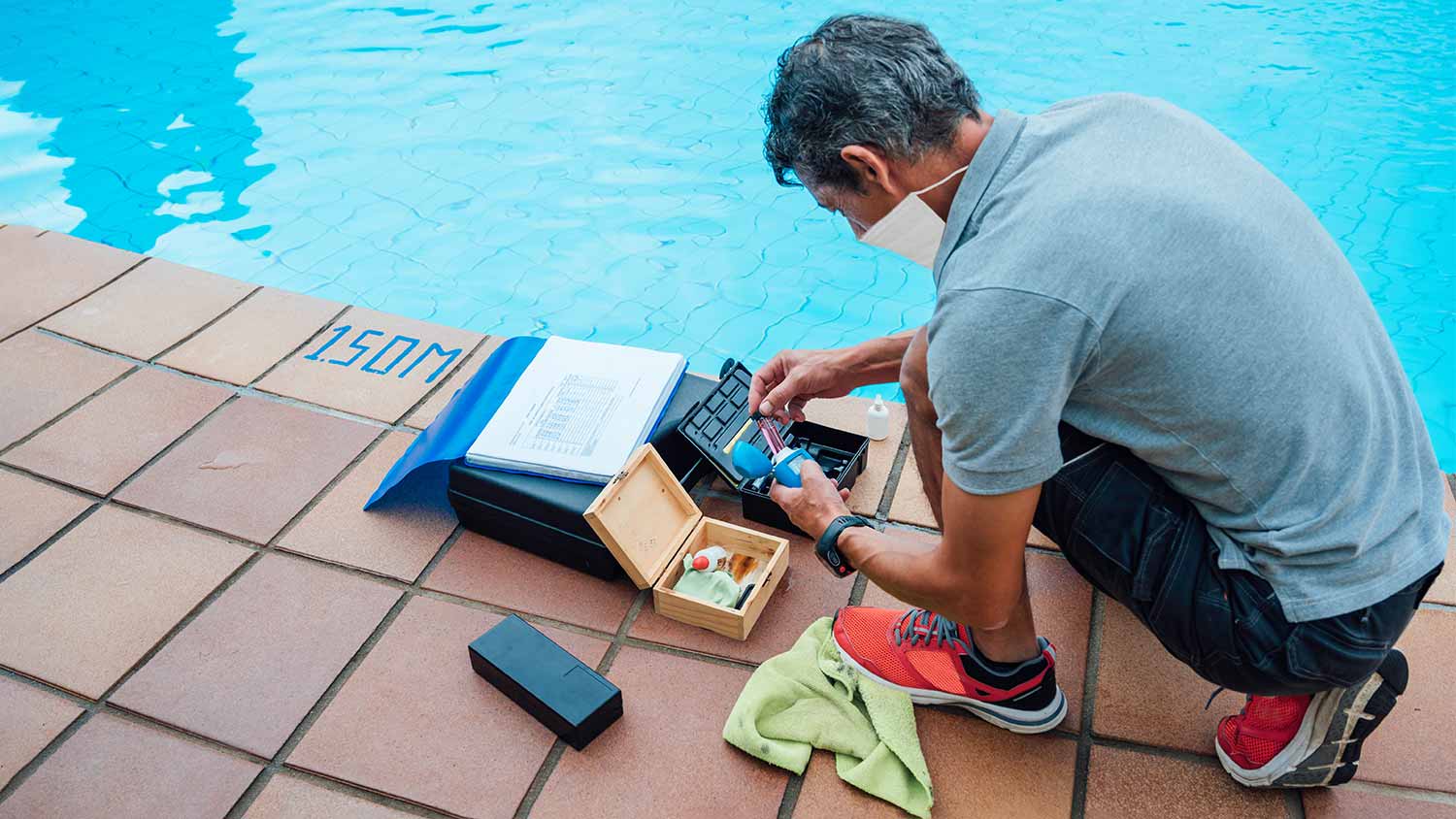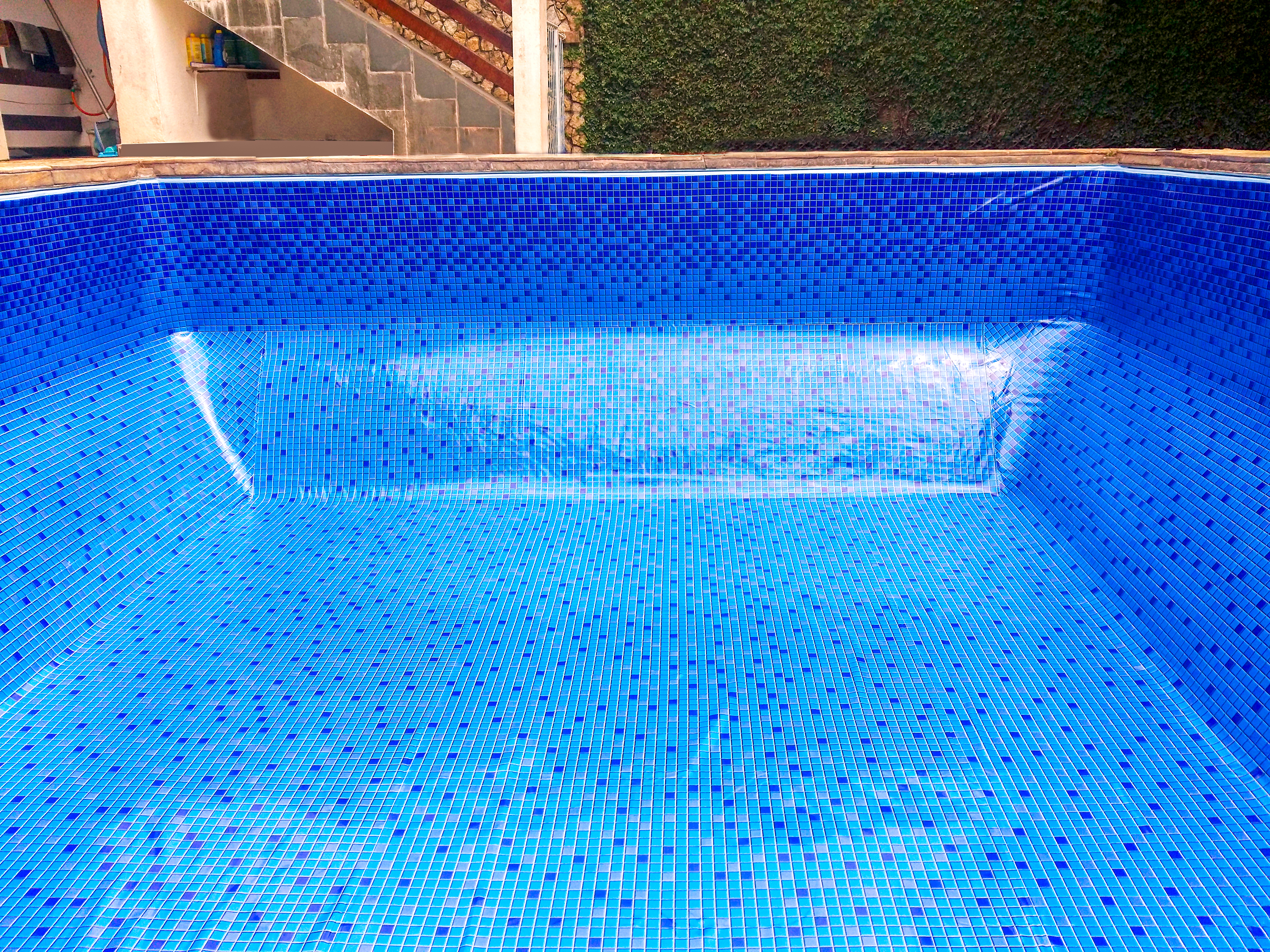
If you’ve been considering installing a new pool in the Buckeye State, this guide will help you understand inground pool costs in Columbus.


Your pool requires between one and four parts per million (ppm) of chlorine.
Use your pool’s gallon volume to calculate chlorine needs.
Choose from liquid, powder, or tablet forms of chlorine.
Accurate measurement ensures clean, safe water.
The average cost of chlorine for a pool is between $5 and $50 per week.
Regularly adding swimming pool chlorine is crucial for maintaining a clean, clear, and safe swimming pool. However, knowing precisely how much chlorine to add can be challenging. Use this chlorine calculator to determine your pool's needs, but always double-check the product's label to avoid errors.
Several costs make up the total price of pool maintenance. Chlorine is just one of them. However, its frequent use means that adding the right amount when necessary is essential for both safety and budgeting.
Your pool needs to have between one and four ppm of chlorine measured against the water volume. To determine this, the first step is to calculate your pool's capacity, or volume, in gallons.
Additionally, chlorine is available in several types. Knowing which type you'll use is another essential factor.
The chart below assumes you're adding chlorine for regular maintenance to a three ppm level.
| Size in gallons | Liquid chlorine (gallons) | Chlorine powder (ounces) | Chlorine tablets |
|---|---|---|---|
| 5,000 | 0.5 | 2 | 1 |
| 10,000 | 1 | 3.5 | 2 |
| 15,000 | 1.5 | 5 | 3 |
| 20,000 | 2 | 6.5 | 4 |

Regular testing will ensure you know precisely the chlorine level in your pool. When the level drops to around one ppm, it's time to add more.
The critical measurement when adding chlorine is the actual amount of water in the pool. To determine that, you'll need to know the cubic-foot volume of the pool multiplied by 7.5, which is the number of gallons in a cubic foot.
To measure the volume of a rectangular pool with a constant depth, simply measure one short side, one long side, and the depth. Multiply the three values together and then multiply by 7.5 to determine the number of gallons.
L x W x D x 7.5 = volume in gallons
If your pool has a shallow end and a deep end with a continuously sloping bottom, multiply the length and width by the average depth, and then multiply the result by 7.5. Obtain the average depth by measuring the deepest and shallowest parts, adding the values, and then dividing the sum by two.
To measure the volume of a circular pool, simply measure from one side of the circle to the other at its widest point. Divide the value by two, square it, and multiply that number by 3.14. Now, multiply the result by the depth and by 7.5 to calculate the total volume.

To determine the volume of irregular pools, treat each section as its own pool. For example, if you have a sloping bottom in one part of the pool and a constant depth in another, determine the volume of each space and add the results together to find the total pool volume.

Owning a pool requires continuous maintenance. While many homeowners gladly accept the challenge, pool maintenance pros do the job every day and are excellent at heading off chemical problems before they get out of hand.
If you're confident in your pool maintenance skills, you can save some money by doing the chores on your own. However, even the job of adding chlorine can be tricky. Perfection depends on understanding how the weather, usage, and other variables affect the pool's chemicals. For that reason, hiring a local pool service is often the best route.
From average costs to expert advice, get all the answers you need to get your job done.

If you’ve been considering installing a new pool in the Buckeye State, this guide will help you understand inground pool costs in Columbus.

The cost of pool liner replacement in Columbus depends on the size and shape of your pool, as well as the liner material and type. Here’s how the costs break down.

Need to know what pool resurfacing costs? Use this handy guide to get an accurate estimate for your project and see what factors can affect your total.

A pool cover protects against debris and temperature changes while also preventing accidents. This guide breaks down the five main types of pool covers to choose from.

The key to maintaining an aboveground pool is using the right tools and chemicals for the job. Use this guide to learn how to clean an aboveground pool.

Swimming pools come in many sizes, but this pool size chart will simplify your choices and give you tips on how to choose the perfect size for your space.